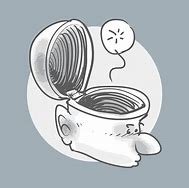
Distribution and habitat
These fish are found along the southern Australian coastline, from South Australia to eastern Victoria. They occupy reefs, ledges, crevices, and deep cave systems, at depths ranging from 3 to over 40 m, sometimes in small groups containing individuals of sizes varying from small juveniles to mature adults.[1]
Eggs are laid on a substrate and are guarded by the male until they hatch.[1]
They feed on fish and crustaceans.[1]
Damsel Species Articles
Green Chromis aka Black-axil Chromis Blue Green Chromis Blue Velvet Damsel Yellowtail Damsel Fiji Blue Devil Striped Damsel Blacktail Damsel Domino Damsel
Black Clownfish - Information about Black clown fish Breeding Clownfish - A very brief describtion on how to breed clownfish Cinnamon Clownfish - Information about Cinnamon Clownfish Clarkii Clownfish - Information about Clarkii Clownfish Maroon Clownfish - Information about Maroon Clownfish Ocellaris Clownfish - Information about Ocellaris Clownfish Percula Clownfish - An article about how to keep and breed Percula breeding. Pink Skunk Clownfish - Information about Pink Skunk Clownfish Saddleback Clownfish - Information about Saddleback Clownfish Tomato Clownfish - An in deepth article about tomato clownfish.
From Wikipedia, the free encyclopedia
The western blue devil (Paraplesiops sinclairi) is a species of fish in the longfin family Plesiopidae endemic to Western Australia.[1] The fish is found in rocky reef habitats in the coastal, inshore waters of southwestern Western Australia, from the Recherche Archipelago to Lancelin.[1] The specific name was coined as a memorial to the ichthyologist Nicholas Sinclair of the Australian Museum who was involved in the collection of the type specimens.[2]
From Wikipedia, the free encyclopedia
The southern blue devil (Paraplesiops meleagris) is a species of fish in the longfin family Plesiopidae endemic to southern Australia. It is a close relative of the eastern blue devil (Paraplesiops bleekeri), which lives in the coastal waters of eastern Australia, and of the western blue devil (P. sinclairi), of southwestern Western Australia with which it is sometimes considered conspecific.
The fish grows to about 350 mm in length. It is generally deep blue, bluish, or blue-brown in colour with a scattering of brighter blue spots, with a long dorsal and large anal and pelvic fins.[1]
Paraplesiops bleekeri
Eastern blue devil fish, Paraplesiops bleekeri, also known as Bleakers blue devil fish, are a shy, secretive fish found in caves, crevices and under ledges on inshore reefs and estuaries.
Eastern blue devil fish are distributed from southern Queensland to Montague Island on the NSW south coast.
Eastern blue devil fish are listed as a protected fish in NSW under the Fisheries Management Act 1994. Heavy penalties apply for taking or possessing them.
Eastern blue devil fish are most easily recognised by their banded pattern of blue and white stripes on the body, blue spotted head, blue dorsal and anal fins, and yellow tail fin and base and pectoral fins. The pelvic fins and rear dorsal and anal fins are elongated. When blue devil fish spread these fins they overlap, making the fish appear larger. The fish grows to 40 cm in length.
Juveniles are generally a less colourful dusky brown with less prominent stripes or general blue colouration. However, some blue spots on the head and the gill covers and a blue band around the edges of all fins are still prominent.
Taking or possessing Eastern blue devil fish (or any other species of protected fish) is an offence and heavy penalties apply. For corporations these penalties can include fines of up to
$55 000 while individuals can face fines of up to $11 000 and up to 3 months in prison.
For more information on general fishing regulations check with your local fisheries office or visit www.dpi.nsw.gov.au/fisheries
To contact your local NSW Fisheries Office visit https://www.dpi.nsw.gov.au/contact-us/contact-a-dpi-fisheries-officer or phone 1300 550 474.
Hoese DF & Kuiter RH 1984, ‘A revision of the Australian fish genus Paraplesiops with notes on other Australian genera’, Records of the Australian Museum 36: 7–18.
Hutchins B & Swainston R 1986, Sea fishes of southern Australia. Complete field guide for anglers and divers, Swainston Publishing.
Kuiter RH 1993, Coastal fishes of south-eastern Australia, Crawford House Press, 437 pp.
Neira FJ, Miskiewicz AG & Trnski T 1998, Larvae of temperate Australian fishes: laboratory guide for larval fish identification, University of Western Australia Press, 474 pp.
Chrysiptera cyanea, from the Greek words "chrysos" meaning golden and "pteron" meaning fin/wing, is a species of damselfish that goes by many names, such as blue damselfish, blue demoiselle, sky-blue damsel, orange-tail blue damselfish (usually referring to the males), Hedley's damselfish, sapphire devil, and blue devil damselfish. The photos that you can find online of these fish never seem to do their deep, blue coloring justice. The gorgeous, vibrant blue scales of the blue devil damselfish really catch the light beautifully in person. Females and juvenile males of this species will usually have a black dot on their dorsal fin. The females tend to stay almost completely blue, while the males develop that vibrant yellowish-orange coloring on their snouts that may extend to their chest, fins, and tails. The blue devil damselfish has the ability to darken to an almost black color quickly. This usually happens when it is threatened and trying to hide. After the perceived threat is gone, it will return to its normal color in a matter of moments.
Growing up to 3 inches in length, these hardy fish are good for new and veteran reef chasers in a tank over 30 gallons. They are also a great choice for reef aquariums with invertebrates. Blue devil damselfish are also relatively easy to please with a variety foods. In the wild, they eat a variety of zooplankton, worms, brine shrimp, and copepods. They readily accept most frozen foods. Some blue devil damselfish will accept flake foods, but some may reject it.
After keeping 2 myself, I can personally attest to the name "blue devil." Blue devil damselfish are very territorial and aggressive. You'll hear, "This should be the last fish that you add to your reef tank," about several different species of damselfish during your time in this hobby, but, believe me - this particular species really should be one of the last fish that you introduce. As the blue devil damselfish matures, it may demonstrate pronounced territorial behavior towards future additions to the aquarium, especially with smaller or less aggressive fish. When keeping the blue devil damselfish with other fish, provide multiple hiding places to break up territories and decrease aggression. They do like to have their own cave and will spend most of their time defending it.
Chrysiptera cyanea, from the Greek words "chrysos" meaning golden and "pteron" meaning fin/wing, is a species of damselfish that goes by many names, such as blue damselfish, blue demoiselle, sky-blue damsel, orange-tail blue damselfish (usually referring to the males), Hedley's damselfish, sapphire devil, and blue devil damselfish. The photos that you can find online of these fish never seem to do their deep, blue coloring justice. The gorgeous, vibrant blue scales of the blue devil damselfish really catch the light beautifully in person. Females and juvenile males of this species will usually have a black dot on their dorsal fin. The females tend to stay almost completely blue, while the males develop that vibrant yellowish-orange coloring on their snouts that may extend to their chest, fins, and tails. The blue devil damselfish has the ability to darken to an almost black color quickly. This usually happens when it is threatened and trying to hide. After the perceived threat is gone, it will return to its normal color in a matter of moments.
Growing up to 3 inches in length, these hardy fish are good for new and veteran reef chasers in a tank over 30 gallons. They are also a great choice for reef aquariums with invertebrates. Blue devil damselfish are also relatively easy to please with a variety foods. In the wild, they eat a variety of zooplankton, worms, brine shrimp, and copepods. They readily accept most frozen foods. Some blue devil damselfish will accept flake foods, but some may reject it.
After keeping 2 myself, I can personally attest to the name "blue devil." Blue devil damselfish are very territorial and aggressive. You'll hear, "This should be the last fish that you add to your reef tank," about several different species of damselfish during your time in this hobby, but, believe me - this particular species really should be one of the last fish that you introduce. As the blue devil damselfish matures, it may demonstrate pronounced territorial behavior towards future additions to the aquarium, especially with smaller or less aggressive fish. When keeping the blue devil damselfish with other fish, provide multiple hiding places to break up territories and decrease aggression. They do like to have their own cave and will spend most of their time defending it.
Chrysiptera cyanea, from the Greek words "chrysos" meaning golden and "pteron" meaning fin/wing, is a species of damselfish that goes by many names, such as blue damselfish, blue demoiselle, sky-blue damsel, orange-tail blue damselfish (usually referring to the males), Hedley's damselfish, sapphire devil, and blue devil damselfish. The photos that you can find online of these fish never seem to do their deep, blue coloring justice. The gorgeous, vibrant blue scales of the blue devil damselfish really catch the light beautifully in person. Females and juvenile males of this species will usually have a black dot on their dorsal fin. The females tend to stay almost completely blue, while the males develop that vibrant yellowish-orange coloring on their snouts that may extend to their chest, fins, and tails. The blue devil damselfish has the ability to darken to an almost black color quickly. This usually happens when it is threatened and trying to hide. After the perceived threat is gone, it will return to its normal color in a matter of moments.
Growing up to 3 inches in length, these hardy fish are good for new and veteran reef chasers in a tank over 30 gallons. They are also a great choice for reef aquariums with invertebrates. Blue devil damselfish are also relatively easy to please with a variety foods. In the wild, they eat a variety of zooplankton, worms, brine shrimp, and copepods. They readily accept most frozen foods. Some blue devil damselfish will accept flake foods, but some may reject it.
After keeping 2 myself, I can personally attest to the name "blue devil." Blue devil damselfish are very territorial and aggressive. You'll hear, "This should be the last fish that you add to your reef tank," about several different species of damselfish during your time in this hobby, but, believe me - this particular species really should be one of the last fish that you introduce. As the blue devil damselfish matures, it may demonstrate pronounced territorial behavior towards future additions to the aquarium, especially with smaller or less aggressive fish. When keeping the blue devil damselfish with other fish, provide multiple hiding places to break up territories and decrease aggression. They do like to have their own cave and will spend most of their time defending it.
These fish prefers deep cave systems and ledges, which may be inhabited by several individuals ranging from small juveniles to mature adults. They can be found in depths of 3 m to over 40 m.
The species occurs along the southern Australian coastline, from eastern Victoria to the Houtman Abrolhos Islands in south-western Western Australia.
The map below shows the Australian distribution of the species based on public sightings and specimens in Australian Museums. Source: Atlas of Living Australia.
Geographical range, habitat and habits
The Blue Devil inhabits the Indo-West Pacific. Its range stretches from the eastern edge of the Indian Ocean and Western Australia to New Guinea, New Britain, Solomon Islands, Marianas and Caroline Islands, Indonesia, Philippines, Taiwan and Ryukyu Islands. Southwards, it can be encountered down to Vanuatu, New Caledonia, Samoa, and Palau and Yap in Micronesia.
The Blue Devil is a reef associated species that lives among rubble and corals in clear sheltered lagoons and subtidal reef flats. Its depth range is 0-10 meters / 0-33 feet and it forms groups consisting of one adult male fish and several females or juveniles. When it feels scared, this fish will hide inside a hole or crevice and change its colour until it becomes almost completely black. One it feels safe again, it will rapidly change back into its normal colouration.
The largest scientifically measured Blue Devil was 8.5 cm / 3.3 in.
Just as the name suggests, the Blue Devil is a brilliantly coloured light-blue fish. Juveniles and females normally sport a small black spot at the rear base of the dorsal fin and will typically not have any yellow markings. The adult male will on the other hand have a bright yellow or orange snout and tail and no black spot. (Please note that some females never develop any black spot.)
As mentioned above, the Blue Devil can temporarily change colour when it needs to stay hidden.
The Blue Devil is a very hardy marine species that can be recommended for novice saltwater aquarists. Due to its sturdiness it is commonly used to cycle new aquariums, but you should keep in mind that adding this fish as the first inhabitant of an aquarium will amplify its natural territorial and aggressive behaviour. Even when added last to a set up, a Blue Devil can become a problem for fish that can’t fend for themselves in the aquarium. The Blue Devil is normally quite peaceful as a juvenile fish but the territorial and aggressive behaviour will manifest sooner or later.
The aquarium where you house your Blue Devil should be well decorated and include a lot of hiding spots for the devil as well as for other fish. You can for instance use rocks and corals to form caves, crevices and crannies. Also decorate the aquarium in a way that makes it possible for the Blue Devil to claim only a part of it as its territory, otherwise it will claim the entire tank and try to chase away all other fish.
If you want to keep more than one Blue Devil, house one male with several females and introduce all members of the group simultaneously. If you want to keep a single Blue Devil without any other fish, a 10 gallon / 40 litre aquarium is large enough. You should however keep in mind that this is a group dwelling species in the wild. Getting a 30 gallon / 115 litre aquarium or larger and housing a group of Blue Devils is more natural for the fish than keeping a single specimen.
Be careful when you place your hand in an aquarium inhabited by an old Blue Devil because it may bite.
The Blue Devil is considered reef safe. The recommended water temperature is 75-82° F / 25-28° C. The pH-value should be kept in the 8.1-8.4 range and the specific gravity at 1.020-1.025. A water hardness around 8 - 12° dKH is ideal.
In the wild, the omnivorous Blue Devil feeds chiefly on algae, copepods and pelagic tunicates. In the aquarium, it will accept a long row of different foods, including dry food. It is important to give it a varied diet to ensure optimal health and feeding it dry food only is not recommended. Flakes or pellets can be used as a base, but should be combined with algae or vegetables and live, fresh or frozen meaty foods. It is important that the food is small enough to devour, e.g. finely chopped fish fillets and shrimps.
Feed your Blue Devil many small meals throughout the day instead of just a few big ones. When kept in a thriving reef aquarium, the Blue Devil with hunt prey on its own and you can decrease the amount of food you give it.
Sexing adult Blue Devils is easy, because adult males look very dissimilar from adult females. Juvenile fish will however have the colouration of adult females regardless of sex.
If the fish has a bright yellow or orange snout and tail, it is an adult male. If the fish has a small black spot at the rare base of its dorsal fin, it is an adult female or a juvenile specimen. Please note that some females never develop any black spot.
The Blue Devil has been successfully bred in hobby aquariums. It is an egg depositing species.
Chrysiptera cyanea is known under many different common names in English, such as Blue Devil, Blue Devil Damsel, Sapphire devil, Cornflower Sergeant-major, Cornflower Sergeantmajor, Red Tail Australian Damsel, Sky-blue Damsel, Blue Damsel, Blue Damselfish, and Orangetail Blue Damselfish.
Chrysiptera cyanea has not been evaluated for the IUCN Red List of Threatened Species.























